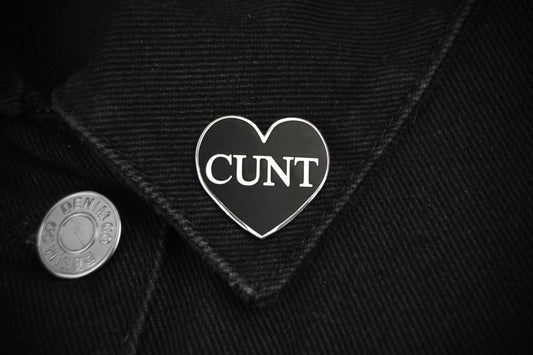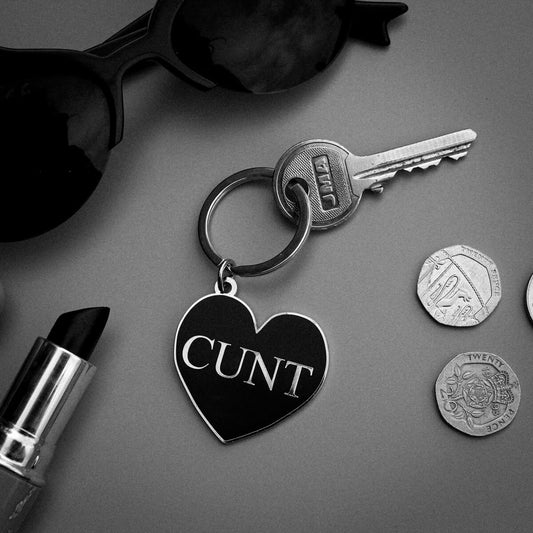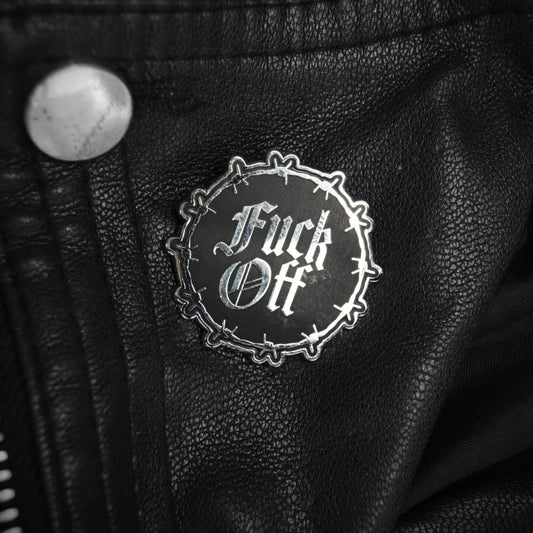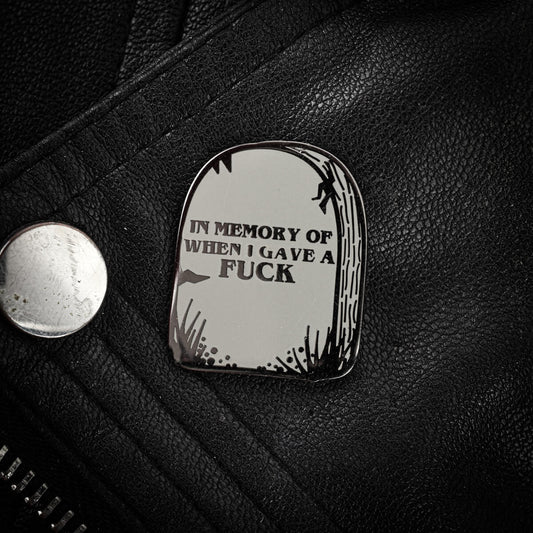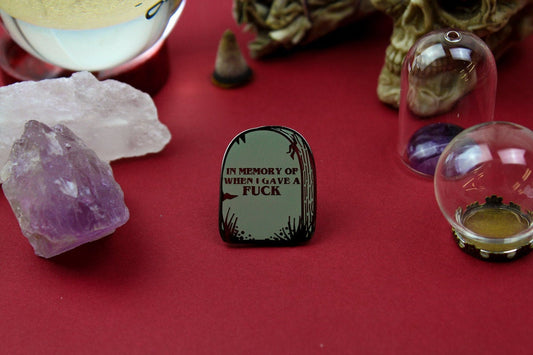Who Are the Most Famous Goth Icons and Figures?
Share
Introduction
Goth culture, known for its distinctive style and music, owes much to iconic figures who shaped its evolution. These influential figures have not only shaped goth music and fashion but have also played a crucial role in shaping its perception in mainstream society. By embodying and evolving the goth aesthetic, they have ensured that the subculture maintains its relevance and vibrant presence on a global scale.
Before you crack on with the rest of the article though, can we just briefly divert your gaze to some of our gothic pins and patches? We think you'll like them!
Pioneers of Goth Music
Goth music has been significantly shaped by a few pioneering figures who defined its sound and style. Peter Murphy, often hailed as the "Godfather of Goth," is a pivotal figure in this genre. As the frontman of Bauhaus, Murphy's deep, resonant voice and dramatic stage presence set the standard for what would become the quintessential goth style. Bauhaus' iconic track "Bela Lugosi's Dead" is widely regarded as one of the first goth rock songs, solidifying Murphy’s place in goth history.
Siouxsie Sioux, the formidable lead singer of Siouxsie and the Banshees, is another iconic figure who has made a lasting impact on goth music and fashion. Renowned for her distinctive voice and daring fashion choices, Siouxsie challenged conventions with her provocative lyrics and avant-garde style. Tracks like "Spellbound" and "Cities in Dust" showcase her ability to blend dark, poetic lyrics with innovative musical arrangements, establishing her as a defining figure in the goth subculture.
Robert Smith, the frontman of The Cure (who have many fans here at Occult Towers of course), is massively synonymous with goth music. His wonderfully dishevelled hair, smudged lipstick, and mournful voice have become iconic within the goth scene. Smith's music, known for its introspective and atmospheric qualities, deeply resonates with goth audiences. In a 2000 interview, Smith expressed his passion for creating atmospheric music with The Cure, a style he favoured above all others. This atmospheric essence is central to goth music, evident in tracks like "A Forest" and "Lovesong" which epitomise his signature style.
These artists not only pioneered goth music but also influenced its fashion and cultural ethos, establishing themselves as key figures in the goth movement. Their contributions continue to inspire new generations of goth musicians and fans, ensuring their lasting impact within the subculture.
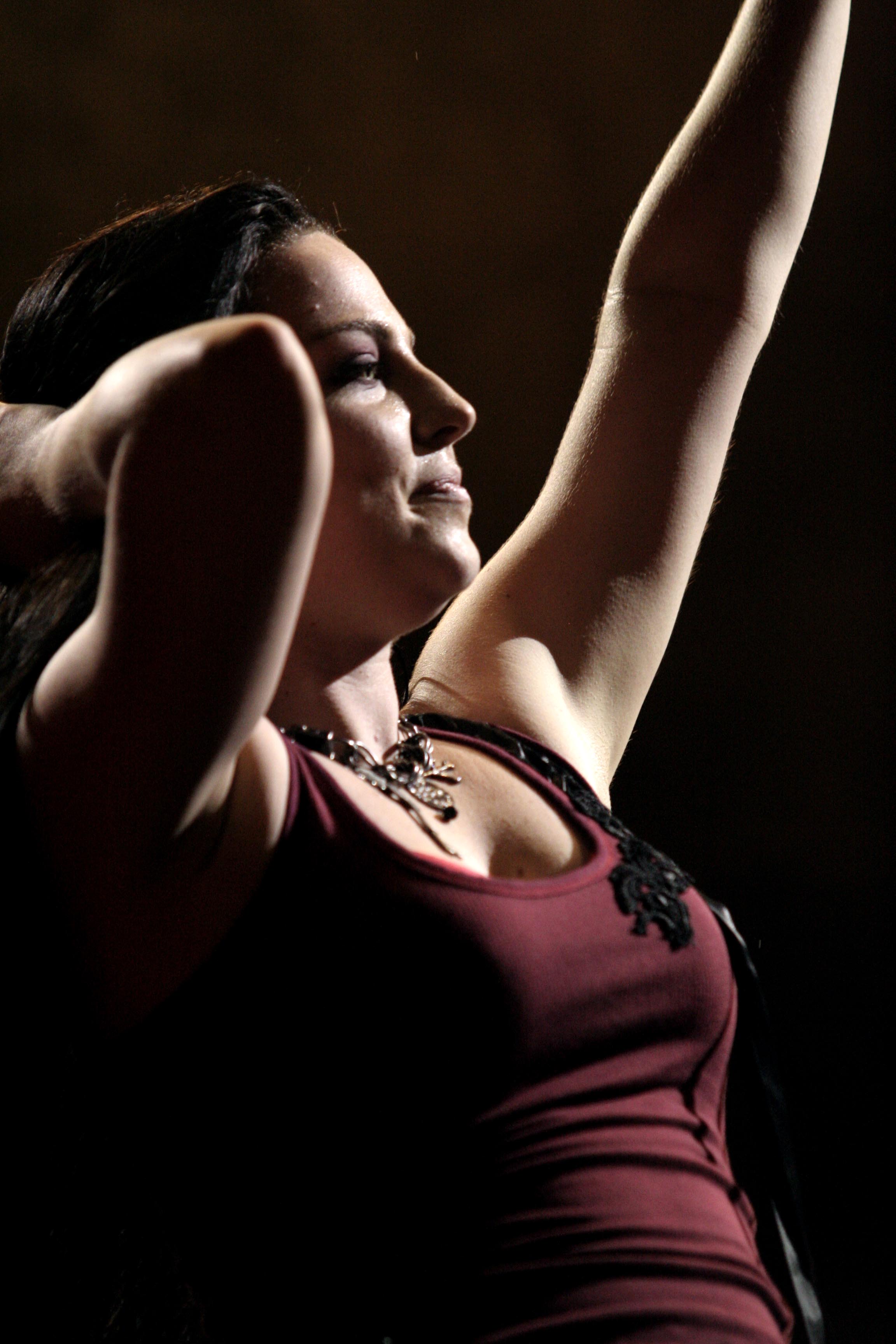
By Daigo Oliva - Flickr: [1], CC BY-SA 2.0, Link
Contemporary Music Influences
Contemporary goth music has evolved through a blend of styles and influences, driven by key figures who have brought gothic elements to wider audiences. Ville Valo, frontman of HIM, is recognised for blending goth with rock and metal. Valo’s lyrics, often characterised as "rich with dark, melodramatic themes," resonate deeply with fans of introspective music. HIM’s fusion of haunting melodies and heavy riffs has solidified Valo’s status as a modern goth icon.
Amy Lee of Evanescence has been instrumental in popularising goth within mainstream music. Renowned for her powerful voice and unique fashion sense, Lee frequently dons Victorian-inspired attire and gothic makeup. Described as a "gothic rock superstar" and a "style icon," Lee's persona embodies independence and confidence. Her debut single with Evanescence, "Bring Me to Life," penned at just 19, achieved commercial success, peaking at number five on the US Billboard Hot 100 and charting in the top ten in over 20 countries. Lee’s ability to blend gothic aesthetics with accessible rock music has introduced goth themes to a broader audience.
Marilyn Manson, a very controversial figure in contemporary goth and industrial music, has also left a significant mark with his provocative style and themes. Known for his dark, theatrical persona and controversial performances, Manson has been at the centre of numerous debates. His lyrics and imagery, scrutinised by American politicians and discussed in congressional hearings, frequently challenge societal norms and stretch the boundaries of acceptable art. Despite, or perhaps because of, these controversies, Manson remains a pivotal figure in modern goth culture, influencing both music and fashion with his distinctive mix of goth and industrial elements.
These contemporary icons continue to shape and redefine goth music, each bringing their unique style and influence to the genre, ensuring its ongoing evolution and relevance.
Fashion and Visual Art Icons
Goth culture is far more than just music; it's a visual and artistic movement that has grown into a powerful cultural force, thanks to key figures who've shaped its aesthetics. Take Patricia Morrison, for example. As the bassist for The Sisters of Mercy, Morrison became an icon of goth fashion. Her signature look—dark, arched eyebrows, bold black eyeliner, striking red lips, and a wardrobe mixing fetish and Renaissance styles—made her a muse for generations of goths. You could hardly find a goth in the 80s and 90s who wasn’t inspired by her bold, dramatic style. Even today, her influence is still present in the subculture's fashion scene.
Then there’s Nick Cave, a legend in his own right. From his early days with The Birthday Party to his later solo work, Cave’s evolution in both appearance and sound has had a profound impact on goth culture. In the early days, his punk-meets-goth aesthetic—think back-combed hair and dishevelled suits—perfectly matched his dark, moody lyrics. Over time, his look has become more refined, yet he’s never lost that deep, brooding intensity that resonates with fans of the gothic ethos. Cave’s music tackles big themes like death, religion, and despair, which align with the darker, more introspective side of goth. His artistic influence stretches far beyond music, leaving a lasting mark on the subculture.
Jillian Venters, or the Lady of the Manners, is another crucial figure who has helped shape modern goth culture. Through her website, Gothic Charm School, and her book of the same name, Venters has offered advice and guidance to goths of all ages. She covers everything from fashion and makeup tips to manners and how to navigate the goth community gracefully. What sets Venters apart is her approach—she champions inclusivity and respect within the goth scene, encouraging people to express themselves while maintaining kindness and understanding. Her work has made goth culture more accessible to newcomers and helps preserve the spirit of the subculture.
These figures—through their fashion, art, music, and advocacy—are the backbone of goth culture’s evolution. They've each added their own unique flavour to the movement, and their legacies continue to shape the way goth is experienced and expressed today. From Morrison’s dark elegance to Cave’s brooding persona and Venters' guidance, these icons ensure that goth remains not just a style or a genre, but a thriving, ever-relevant subculture that continues to inspire new generations.
Literary Contributions
Literature has always been central to goth culture, with certain authors leaving a lasting impact through their gothic novels and dark storytelling. One of the most influential is Anne Rice, whose work has long been a touchstone for goth readers. Often described as having a "Gothic imagination crossed with a campy taste for the decadent and the bizarre," Rice's The Vampire Chronicles series, especially Interview with the Vampire, struck a deep chord within the goth community. Her portrayal of immortal vampires wrestling with existential questions and moral dilemmas made her a key figure in gothic literature. With over 100 million copies sold, her stories, later adapted into a successful film, have resonated widely and secured her legacy as a significant influence on goth culture.
Another standout is William Joseph Martin, formerly known as Poppy Z. Brite, who carved out a distinct space in gothic and horror fiction. Known for a writing style that combines graphic sexual content with a sharp, almost sardonic tone when dealing with grim events, Martin’s work offers something different in the gothic genre. His focus on gay male characters in these dark, often gruesome narratives has given readers a unique perspective. It’s no surprise that he’s built a loyal following—his stories are celebrated for their unflinching, evocative qualities, and he remains a respected figure in gothic literary circles.
Then, of course, there's Neil Gaiman, who has earned his place as one of the most recognisable names associated with gothic themes. Gaiman's body of work—including "The Sandman," "American Gods," "Stardust," "Coraline," "The Graveyard Book," and "The Ocean at the End of the Lane"—weaves supernatural elements with richly developed worlds and complex characters. His stories often feel like they're tailor-made for goth readers, blending dark fantasy with nuanced human emotions. Gaiman's influence goes well beyond the page, with many of his works adapted into films, television, and comics, cementing his reach within the broader cultural landscape.
These authors aren’t just significant to the literary world—they’ve had a tangible influence on goth culture itself. Their works delve into themes of darkness, mystery, and the macabre, offering a wealth of inspiration to goths worldwide. They’ve each added depth to the genre and played a major role in shaping how goth literature is understood and appreciated.
Media Personalities and Influencers
Media personalities and influencers have been pivotal in shaping and keeping goth culture alive, bringing its aesthetic and themes to wider audiences. One of the most recognisable figures in this space is Elvira, Mistress of the Dark. Portrayed by Cassandra Peterson, Elvira first appeared in the early '80s as the host of "Elvira's Movie Macabre", a late-night showcase of B movies. What started as a cult role quickly grew into a major brand. By the late '80s and '90s, Elvira's gothic glamour and campy humour were everywhere—on Halloween costumes, comic books, trading cards, action figures, perfume, dolls, and even pinball machines. Her image became synonymous with Halloween and the darker side of pop culture. Even today, Elvira remains a beloved symbol in both goth and horror communities, blending wit, style, and a flair for the macabre.
In more recent years, Angela Benedict has carved out her own space within the goth community as a popular YouTuber with nearly 100,000 subscribers. Her channel dives deep into life in the goth subculture of the 1990s, covering topics from the goth club scene to thrift shopping and even tackling the issue of bullying within the goth community on social media. Benedict’s content not only serves as a nostalgic look back but also provides thoughtful commentary, making her a significant voice in documenting and preserving goth culture for both long-time enthusiasts and newcomers.
Conor and Lynn, known as the Random Goth Couple on YouTube, are another key presence in the goth media landscape. The Irish duo create vlogs, alt-fashion content, interviews, and reaction videos, giving a personal and relatable glimpse into their lives as a goth couple. Their content, which celebrates the diversity and everyday realities of the goth lifestyle, appeals to both seasoned members of the subculture and curious outsiders. By making the goth aesthetic and lifestyle approachable, they break down misconceptions and show the richness within the subculture.
These media personalities and influencers are essential in keeping goth culture visible and vibrant. Through their platforms, they share their passion for the goth aesthetic, connect with fans worldwide, and ensure that the subculture continues to evolve and thrive. Their contributions help sustain the energy of the goth movement in the modern era.





